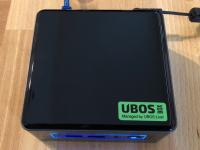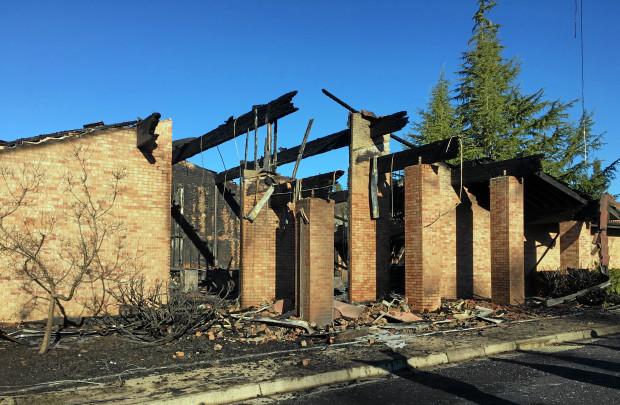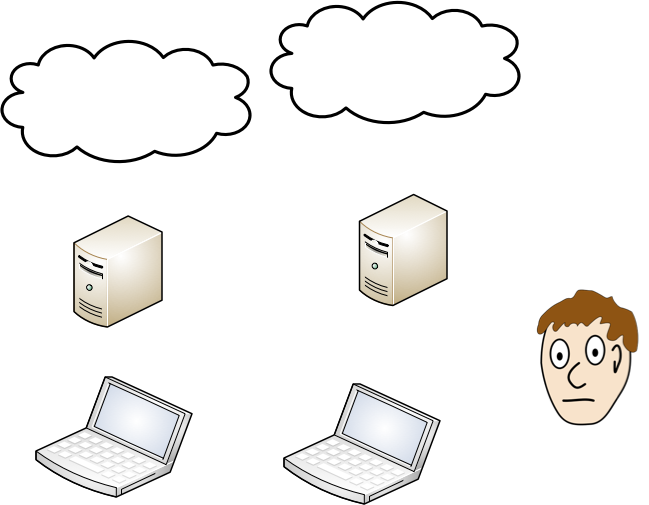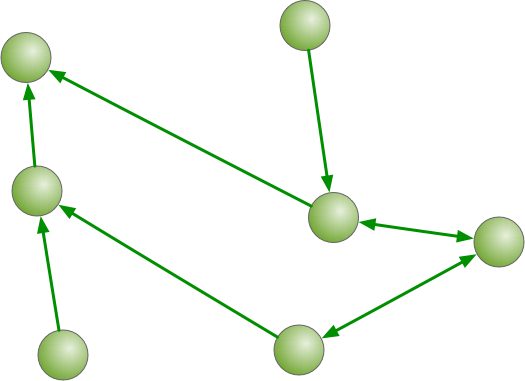Paradux: Recovering From Maximum Personal Data Disaster
Johannes Ernst, Indie Computing Corp.
mail: jernst@indiecomputing.com
· blog: upon2020.com
Mastodon: @j12t@social.coop
· Twitter: @Johannes_Ernst
About myself: Johannes Ernst



- entrepreneurial geek
- from embedded to big data,
from spare bedroom and startup to communities and BigCos -
current: Indie Computing Corp.
- Let's Bring Our Data Home™
- UBOS:
Linux distro for easy self-hosting
ubos.net - UBOSbox Nextcloud:
pre-configured home servers running Nextcloud
indiecomputing.com/products
The California "Camp Fire", November 2018
- deadliest and most destructive wildfire in California history
Wikipedia - burned 70,000 acres in 24 hours
Wired - 86 people died
Wikipedia - "If we’d stayed 10 minutes longer we would have been burned."
New York Times

Bank of the West, Paradise, CA

Paradux: the Problem
Disaster scenarios
- fire burns your house & everything in it
- ... and your backups
- ... but you keep your laptop / phone
- ... or not
- ... and you cannot remember your "root" e-mail password
- ... and you are temporarily out of commission
- ... or permanently
Impact
- can you continue to earn a (the same) living?
- can you recover all your e-mail?
- can you recover all your money?
- can you recover all your family photos?
- can your surviving spouse or children?
Personal data disasters with similar impact
- other natural disasters
- burglary
- malware attack
- Google disables your account
- Facebook disables your account
- AWS disables your account
Defining the Problem
- personal data is distributed: mobile, laptops, desktops, home servers, cloud...
- at home, with a friend, a colo, a lock box at the bank
- some in your head only
- any location of data can "disappear" without warning
- this includes your memory



We want to be able to recover all data. Without enabling data theft.
How Paradux works: outline
| 1. | Create a data inventory (& some more metadata) |
|
|---|---|---|
| 2. | Secure the metadata |
|
| 3. | Distribute many copies of the secured metadata |
|
| 4. | Distribute key fragments to N trusted "stewards" |
|
Paradux step 1: create data inventory & metadata
Data inventory:
- locations of all data
- relationships between data locations ("X is backed up to Y")
- data location access credentials
- backup decryption credentials
Plus info about:
- stewards
- location of metadata
Paradux step 1: data inventory example
"datasets" : [ {
"name" : "home-myself",
"source" : {
"name" : "Home directory on laptop",
"url" : "rsync+ssh://laptop.local/home/myself",
"credentials" : {
"ssh-user" : "me",
"ssh-private-key" : "ssh-rsa ..."
}
},
"destinations" : [
{
"name" : "Apple Time Capsule",
"location" : "Home office",
"frequency" : "automatic"
},
{
"name" : "Amazon S3",
"url" : "s3://mybucket/home-myself",
"credentials" : {
"aws-access-key" : "Axxx",
"aws-secret-key" : "Axxx"
},
"frequency" : 86400,
"encryption" : ...
}, ...
] } ]
Paradux step 2: secure the metadata
- LUKS encrypted volume
- day-to-day access with "everyday passphrase" (never exported)
- recovery secret (never exported as a whole: split into K-of-N parts)
- wrapped in Paradux commands that briefly mounts it when needed
Paradux step 3: distribute the secured metadata
- without at least one copy, recovery is impossible
- reasonably small size
- good locations: cloud hosting; your friend's server
- (relatively short) everyday passphrase is stripped first
- long recovery key
Paradux step 4: distribute key fragments to N trusted "stewards"
Dear Jane Moe,
you have graciously agreed to help John Doe recover from personal data disasters that
might befall them or their family. This sheet contains all information you need to have to
assist when needed. Please keep it in a place where it safe from disasters (like fires)
and unauthorized access (like burglars).
Should you note unauthorized access, loss of this sheet, or if you do not want to
assist John Doe any more, please notify them immediately at: john.doe@example.com.
Paradux version:
0.2
Your recovery fragment:
x = 5
y = 21405987023469813046...
m = 13
k = 3
Locations for recovery data:
https://johndoe.amazons3.com/some/place
http://his.friend/~joedoe/paradux
Paradux 0.2: How to get started
- need: Linux box
- install Paradux from github.com/paradux.
- run
paradux init - this will:
- set up the LUKS volume with an everyday password
- generate the recovery key
- generate templates for data inventory, list of stewards etc.
Paradux 0.2: Configuration
Create/update data inventory:
- on your Linux box, run
paradux edit-datasets - requires everyday password
- edit JSON file with data inventory
.. and other metadata:
- identify stewards:
paradux edit-stewards - some user details for recovery sheets:
paradux edit-user - locations of the metadata:
paradux edit-metadata-locations
Paradux 0.2: Upload metadata
paradux publish-metadata
- requires everyday password
- strips everyday password
- uploads to all previously defined metadata locations
- currently supported:
scp - should become automatic
Paradux 0.2: Notify stewards
paradux export-steward-packages
- currently stdout only
- future: to paper, to USB sticks
Paradux 0.2: Recover some data (have Paradux box, no amnesia)
- on your Linux box, run
paradux status-datasets - requires everyday password
- tells you about data locations and their relationships,
so you can find out where the data is backed up you need to recover
Paradux 0.2: Recover Paradux box (no amnesia)
- contact K of your stewards
- download (public, encrypted) LUKS image
- on a spare machine, install Paradux and run
paradux recover. - enter steward-provided data and reconstruct the recovery secret
- you have your paradux configuration back
- continue with previous scenario.
Paradux 0.2: Recover everything (full amnesia)
- "Somebody" wants to recover:
- executor of estate
- holder of power of attorney
- you (with amnesia)
- maybe they are a steward and remember?
- executor traverses social network and finds K stewards.
- continue with previous scenario.
Paradux 0.2: Attack scenarios
- attacker accesses data inventory when LUKS is mounted
- compare to password manager
- attacker gains access to encrypted data inventory
- LUKS-encrypted with long secret stored nowhere
- has no everyday password
- stewards go rogue
- need conspiracy of at least K stewards who all know each other
Paradux 0.2: Commands
paradux edit-datasets paradux edit-metadata-locations paradux edit-stewards paradux edit-user paradux export-metadata paradux export-steward-packages paradux init paradux publish-metadata paradux recover paradux status-datasets paradux status-metadata-locations paradux status-stewards paradux status-user
Paradux implementation status
Current
- it's very early
- version 0.2, what do you expect!
- very geeky: e.g. must edit JSON files
- upload/download not automated
To do
- add backup automation
- automatic reporting
- make user friendly
- improve recovery process
- integration with password managers?
- and much else
Contributions welcome
Python 3, AGPL 3
Johannes Ernst, Indie Computing Corp.
mail: jernst@indiecomputing.com
· blog: upon2020.com
Mastodon: @j12t@social.coop
· Twitter: @Johannes_Ernst